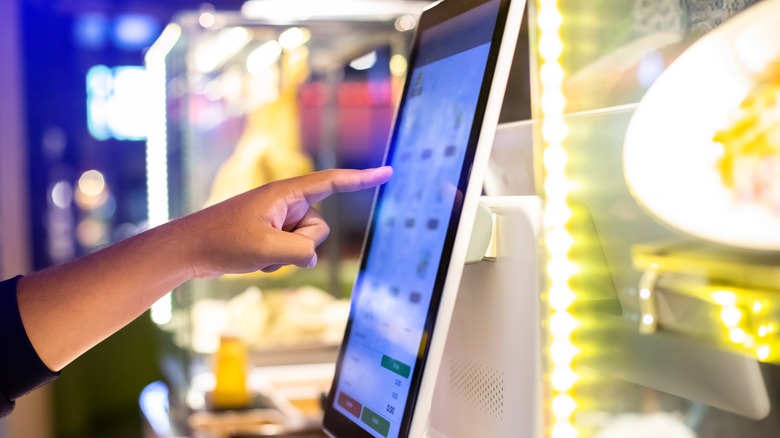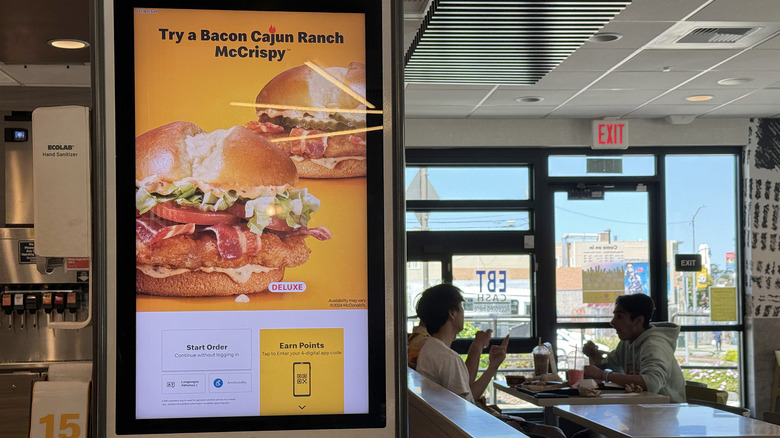How The Digital Kiosks At Fast Food Restaurants Make You Spend More
Fast food restaurants are going all-in on self-service kiosks to increase efficiency and improve customer service. Or, at least, that's what the PR says. Unfortunately, while easy to use, these digital kiosks have a major downside for customers: They lead people to spend more than they usually would.
Just as grocery stores put dairy in the back to encourage people to spend more time (and hopefully money) shopping, self-service kiosks at fast food restaurants are set up to promote products. These tools allow chains to upsell you without relying on a human to try and convince you to buy more stuff. Typically, when you use a self-service kiosk, putting in your order will quickly be met with additional screens asking if you want more items or to upgrade to larger sizes. Say you try to order a hamburger; well, of course, you'll want fries with that, right? So, a pop-up appears asking if you want to add them. Oh, wait! What about a drink? You can add a drink for only a little extra, so why not? These seemingly innocuous prompts are partly how self-service kiosks prompt people to spend 10 to 20% more on average when ordering.
Moreover, kiosks can be programmed to push premium, more expensive items and limited-time deals that encourage additional purchases. Membership programs like Panera's Unlimited Sip Club, which costs members $14.99 per month (up from $10.99 in 2022), can also play a role by personalizing user experiences through loyalty points and subscriptions.
The pros and cons of self-service kiosks
While self-service kiosks provide a convenient way to order food, the party that stands to gain the most from them is restaurateurs and franchisees. Like the use of AI in drive-thrus, one of the biggest benefits of kiosks for restaurants is the opportunity to upsell customers without depending as heavily on human labor. As wages rise, many of the cheapest fast food restaurants look for ways to reduce costs and increase revenue. For example, some fast food franchise owners in California started installing kiosks in response to the state's April 1, 2024 wage hike for workers. Despite being expensive to install, many of the largest chains can make back the cost on new kiosks. While this is good for restaurants, it could mean fewer jobs.
Self-service kiosks can also help fast food restaurants more easily collect customer data by tracking purchasing habits. This may be an excellent way for chains to enhance their upselling methods by learning how to better target customers, but many Americans think the risks of data collection outweigh its benefits, according to the Pew Research Center. On the upside, kiosks can reduce human errors in the ordering process. However, they can also alienate less tech-savvy customers. Sure, younger generations will likely navigate an ordering screen easily, but older folks may have more trouble. So, the next time you use a kiosk at a fast food restaurant, keep all of this in mind — your wallet may thank you.

